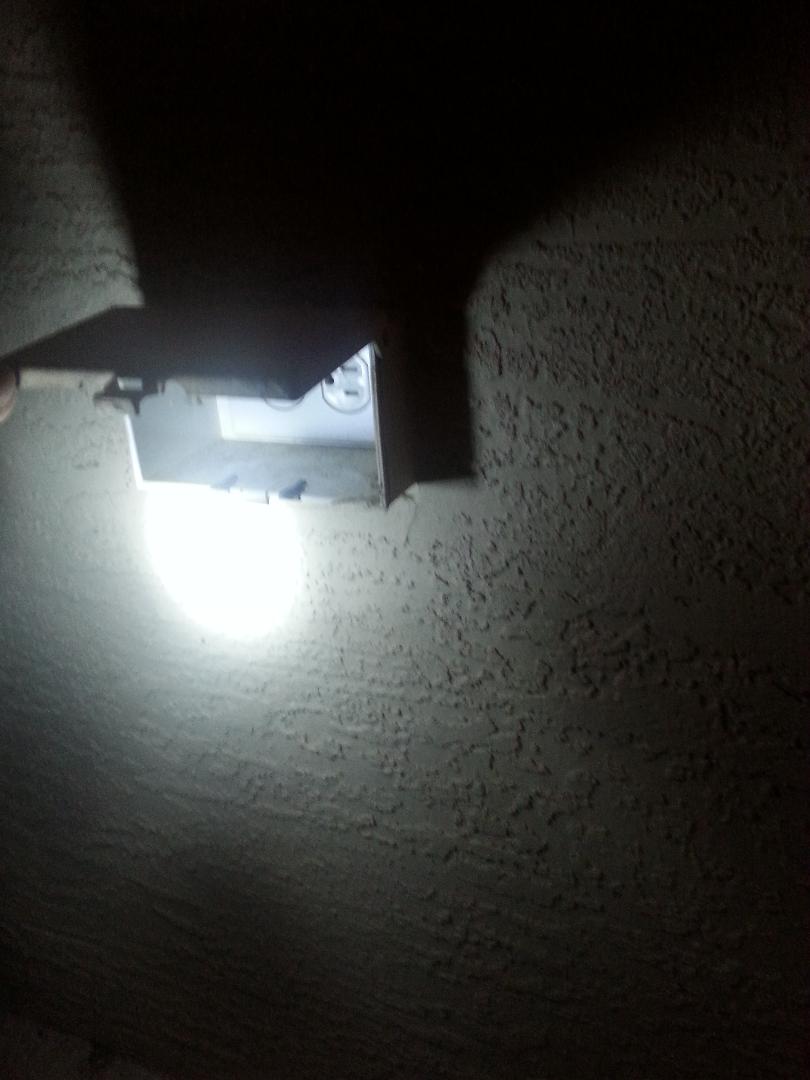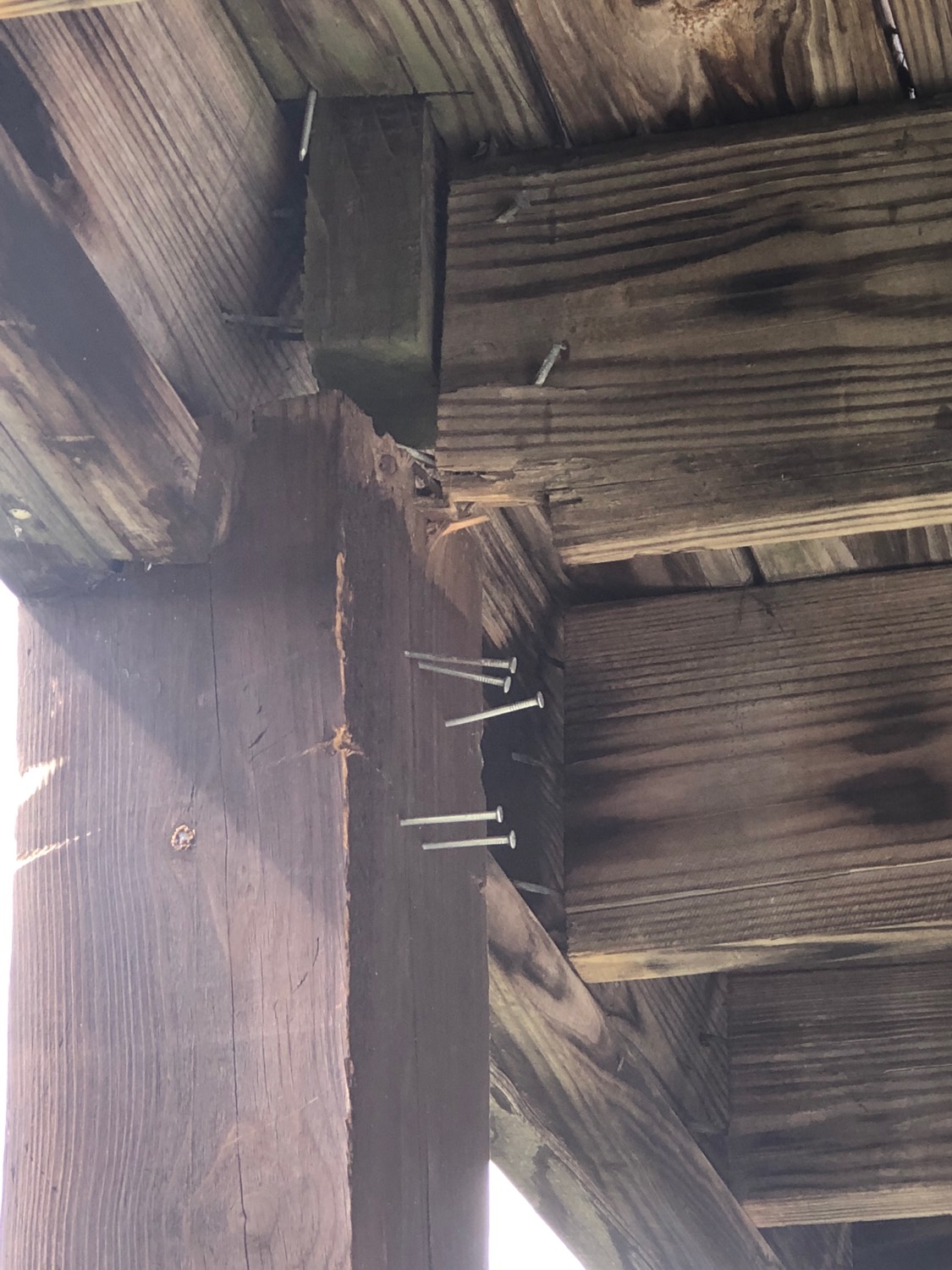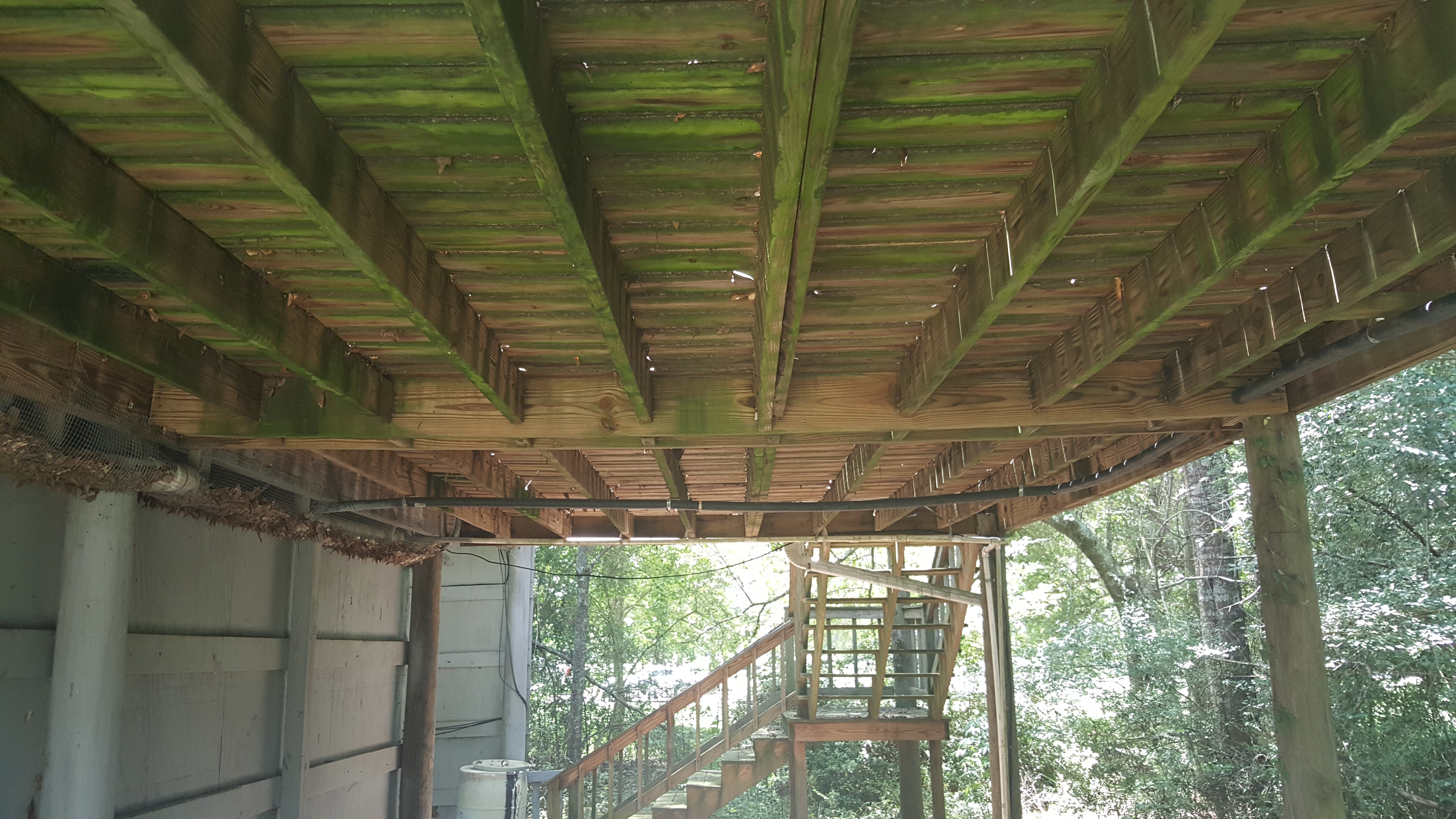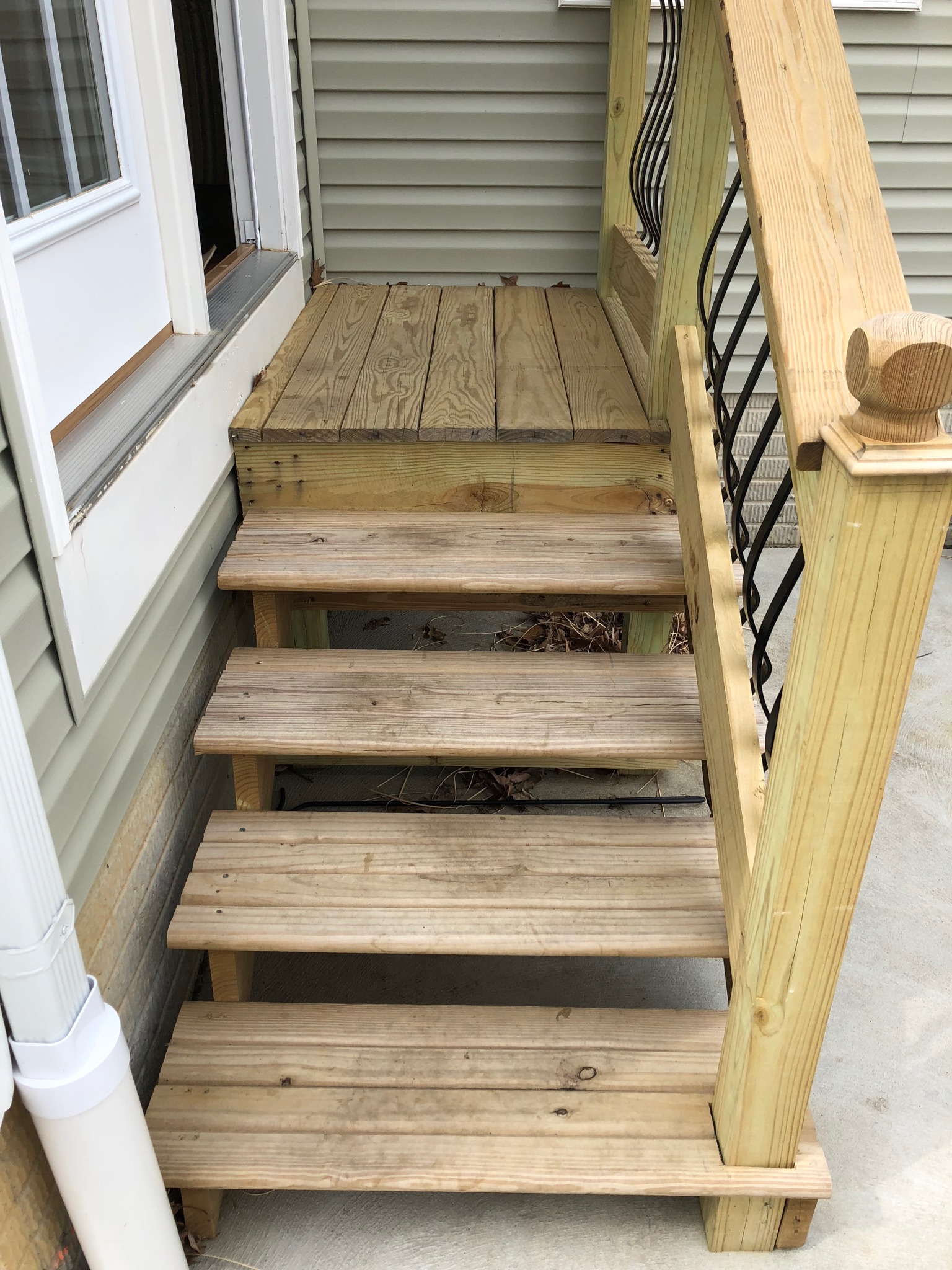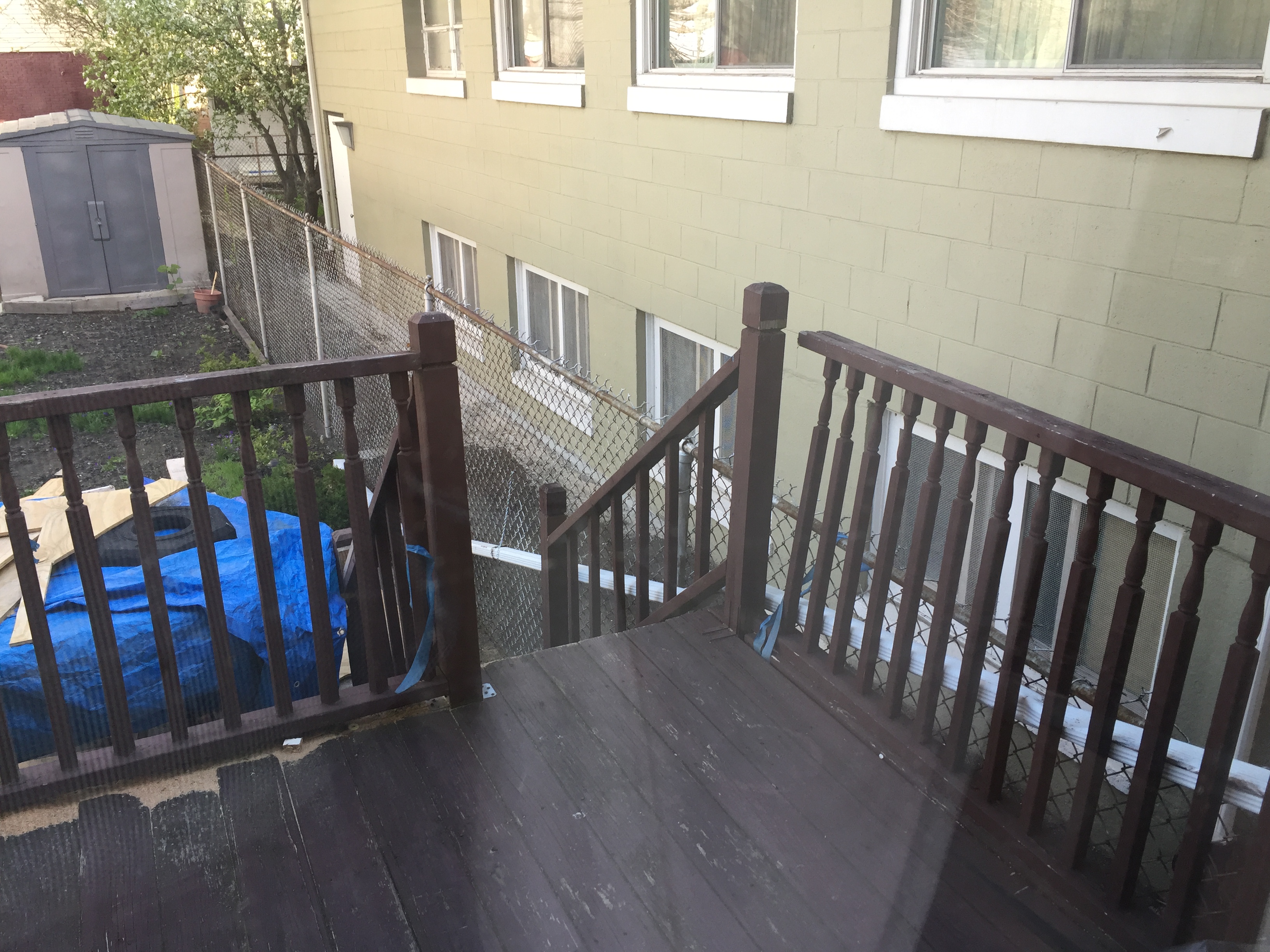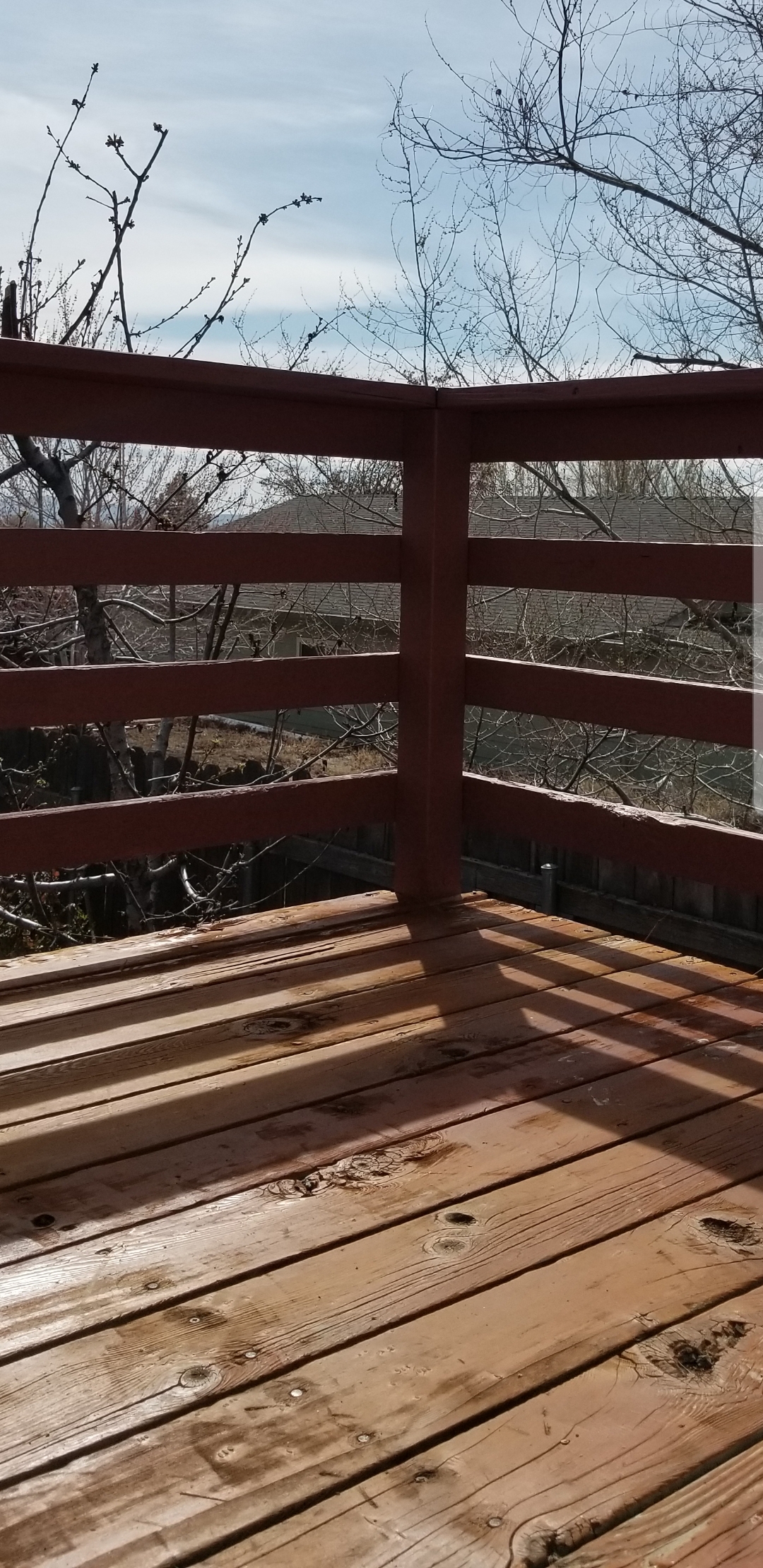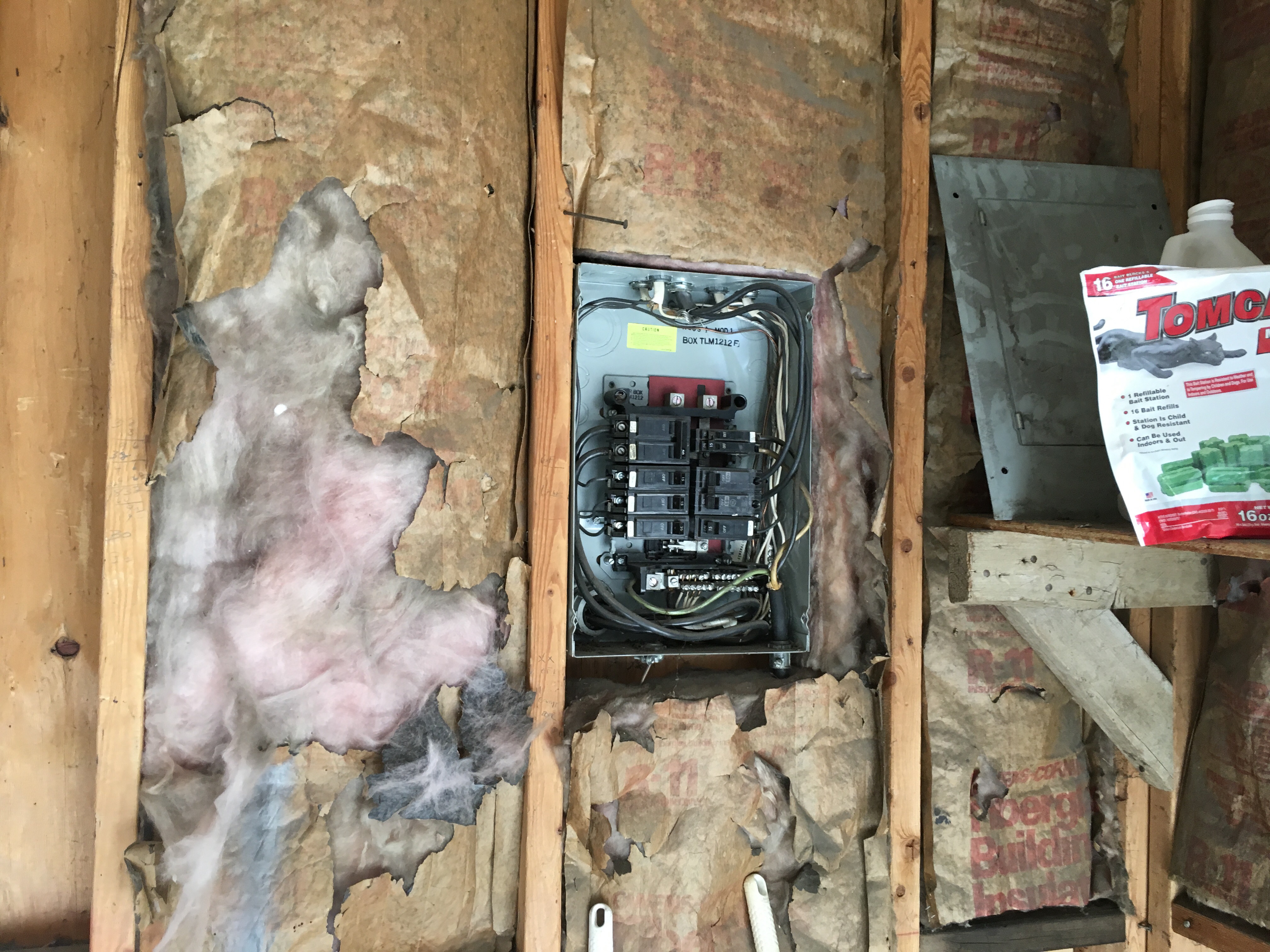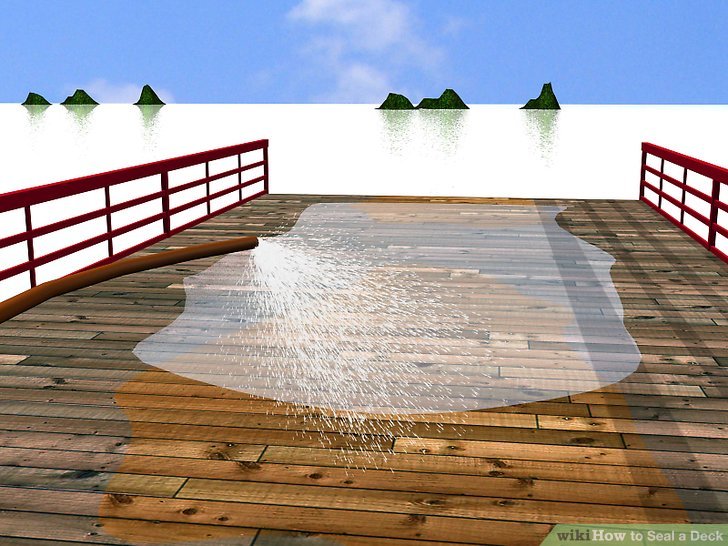Here is a picture of an exterior electric receptacle. It is located on an outdoor patio accessible from inside the house and is less than 6 1/2 feet above the patio surface. Even though it is not a GFCI receptacle, it is on a GFCI circuit. Note the weather tight cover.
I read the article on inspecting decks. The information that sticks out the most to me is that municipalities dont investigate many of the injurys and collapse of decks. The ability for someone to build a deck with out realizing the stress that can be applied causes an ease of injury.
In this photo the floor hoist of the deck is rotted and decayed. It has broken and pulled away a from the frame of the deck. This could contribute to collapse and injury could occur to occupants. This needs to be repaired and replaced.
This is a photo that was taken of a deck inspection where the joist were toe-nailed with no joist hangers in place. The center support of the deck was undersized which caused a large dip in the center. The center support was bolted to the side of the wood posts. My recommendation for this deck was to replace the center support with a 2x8 and install joist hangers on all joists.
I reviewed the article on deck receptacles. Although I always inspect for a working GFCI protected outlet on decks, I learned that decks above 6 1/2’ above the ground are required to have a receptacle. I also learned that a deck of less than 20 square feet are not required to have a receptacle
This picture depicts a couple of areas where common mistakes are made in the design and construction of exterior stairs. The railing, a required element due to the platforms height, is constructed using a 2x6 which is not graspable. I would recommend adding an additional hand rail at the appropriate height fastened to the posts. Additionally the open riser design exceeds the 4 inch limit which makes it an entanglement hazard to children, and would recommend enclosing those areas.
Deck construction is one of the most popular Homeowner construction projects because the materials are readily available and the skill level is perceived relatively low. That being said it is one of the more technically advanced projects that leads to more personal injury than others around the home. I believe Big box stores should provide the non professional with the technical details required to construct a safe product.
Deck inspection video course: Photo shows a 3-in-1 issue as described to buyer client. Ledger board has no visible proper fastening to the structure, toenailed joists to ledger board, and yes - there is a ledger strip present, however the joists make no contact to the ledger strip. Result is slipping of various joists and a quite wavy deck surface.

Article - Basic Basement Waterproofing. I chose this article because this subject is a rough one in my area (Southeast Virginia). The common basement here is the “walkout”. And about 1 in 10 (that I’ve inspected) is either failing or has failed to some degree. Typical problems are slow seepage at wall seams, failure of plumbing wall penetrations, or expiration of exterior wall sealants. I’ve also noticed that many of the worst cases of water/moisture intrusion in my area, are on those basements that have already been repaired at least once. Often the homeowners simply believe that the conditions they are experiencing, such as musty odors and isolated areas of mildew are normal for any basement.
This photo was taken at a deck inspection. This deck ad numerous issues most of which were called out as safety concerns. This picture shows that the connection between the rail and the post has been compromised. It has deteriorated over time and a number if ineffective fixes worsened the condition. Given the condition of the deck it was recommended that the owner consult a contractor and not use the deck until that time since it was unsafe.
I reviewed the requirements for cantilevered deck supports. In addition to all the typical requirements for deck footings, posts, attachment to the house or free standing), the 1:3 requirement is important. Given the geometry of most decks the cantilever is the location where most people will congregate. It is important to therefore understand how the added load at this location will impact the deck structure as a whole.
This picture is of a deck railing which should be deemed unsafe by the inspector. Not only is the spacing more than 4", which is a fall hazard for children, the orientation of the balusters is horizontal, creating a perfect ladder for climbing. This is also unsafe for children.
While reading Dryer Vent Safety I learned I learned IRC Guideline - M1502.5 Duct construction, which states the duct should be constructed of rigid metal having smooth interior surfaces, with joints running in the direction of air flow. This also means that flexible duct is no longer acceptable and should be reported as a fire hazard in the report.
Moisture intrusion into deck ledger board and house was noted. There was no ledger board flashing noted. The Ledger was attached directly to the painted wood siding with inadequate fasteners. Fasteners could not be seen on the back of the rim joist inside of home. We recommend repair/replacement of Deck/Ledger by a qualified deck contractor for safety!

There are multiple issues noted with this photo, first of all there is no dead man cover installed on the electrical panel and there should be for safety purposes. Also there is exposed paper back insulation no need in a garage which can be a fire hazard. Warning label on installation
Rolled roofing is Morgan signed for low slope roofing, most commonly used on a shed roof or patio. The types of roofing material do you not have the same lifespan is a standard roof shingle. They only last approximately 12 years
On the article: Deck Receptacles: Starting in 1971 the NEC required an outdoor receptacle. In 2005 the NEC required 2 receptacles, one on the front and back walls of the house. In 2008 the NEC expanded that to include any deck, balcony or porch with 20 sq ft or more of usable space. They must have a receptacle within the perimeter that must be no more than 6.5ft above the surface. It must be a GFCI and have a weatherproof enclosure. Recommending upgrades to older homes without these requirements is a good addition to your report. Note it as a safety upgrade!
Upon inspection of the back deck, I found that the decking was installed too close together. Decking should be spaced 1/8 inch apart as to allow water through and to prevent pooling on top of the deck. Pooling can create multiple safety concerns such as, trip hazards, accelerated wood decay and unnecessary loads on the deck. I would advice the home owner to have the deck inspection by a licensed contractor.
As of 2005, outdoor receptacles are required in the front and the rear of the house, and not more than 6 1/2 feet from the ground. An outdoor receptacle should be installed within the perimeter of the back deck, given the deck has at least 20 square feet of usable area. This receptacle should also be enclosed with a waterproof cover, the cover should also protect the receptacle from moisture while in use. In addition, I would recommend the homeowner have a GFCI receptacle installed by a licensed electrician as to add further protection to the home.
Inspecting a Deck, Illustrated
More than2 million decks are built and replaced each year in North America
estimated that of the 45 million existing decks, only 40% are completely safe.
Because decks appear to be simple to build, many people do not realize that decks are, in fact, structures that need to be designed to adequately resist certain stresses.
Like any other house or building, a deck must be designed to support the weight of people, snow loads, and objects.
Deck stairs must be safe and handrails graspable.

